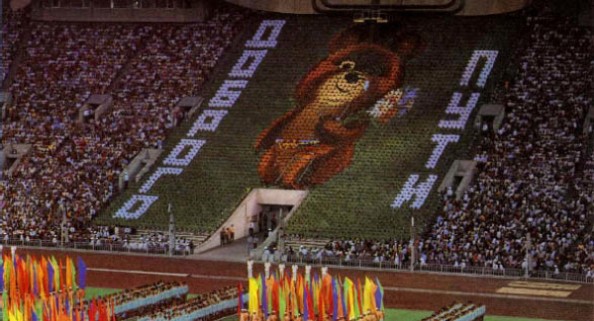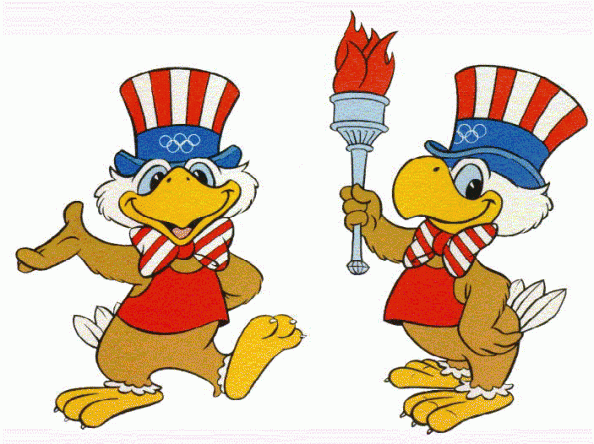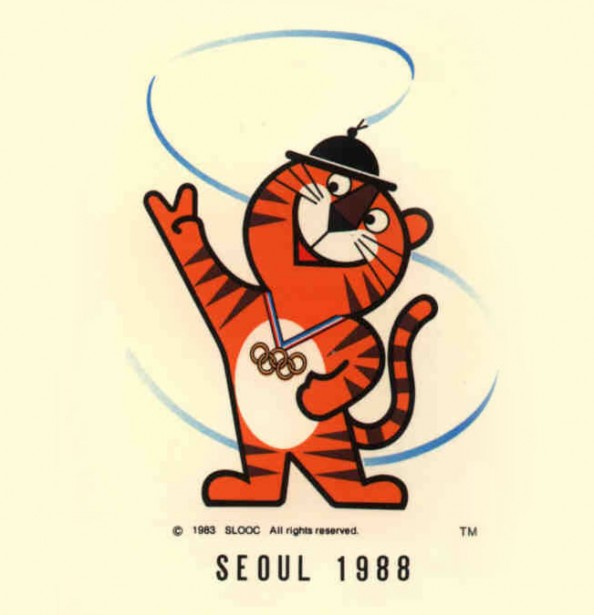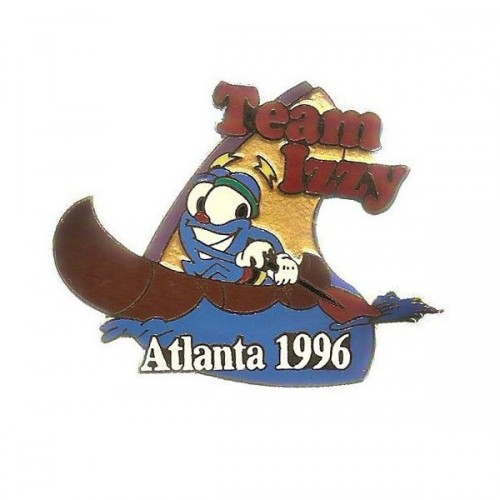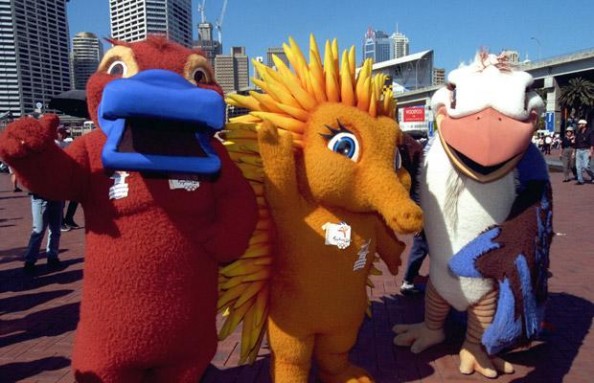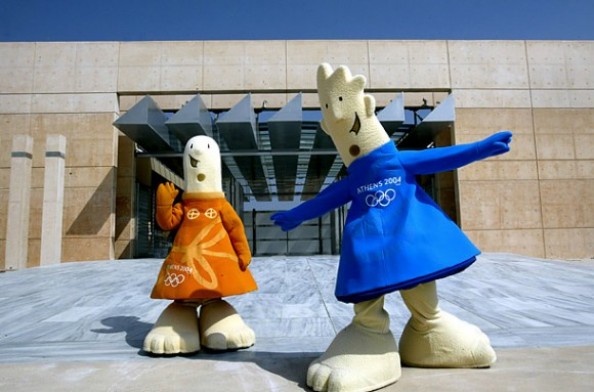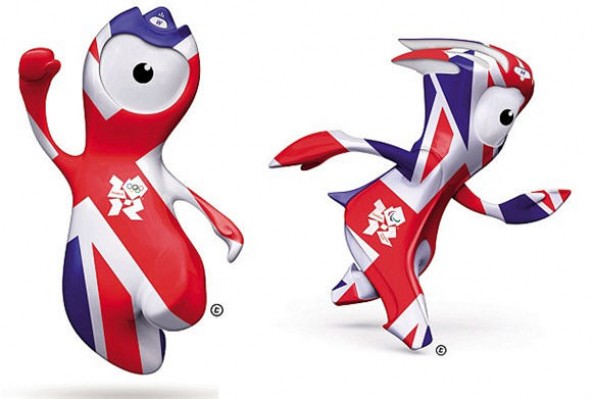The 2012 Summer Olympics in London, with the opening ceremony less than three months away, will be the 30th time the Modern Olympic games are held since 1896 in Athens and the third time in England’s capital, after previously behind the host in 1948 and 1908.
For the 11th time, the games will have an Olympic Mascot, or two mascots to be exact. Like in the United States and later on in Greece, the mascots do not represent an animal of national importance but rather drops of steel with eyes, named for places in the United Kingdom.
Munich 1972 – Waldi
Waldi was the first ever official Olympic mascot. A dachshund, a popular dog breed in Bavaria, supposed to represent the traits desired from athletes – resistance, tenacity and agility. He was modeled after a real life dog, Cherie von Birkenhof. The colors represent the ‘Rainbow Games’ and exclude red and black because of their association with National Socialists Party. Over 7000 athletes from 124 nations took part in the Olympic games, overshadowed by the Munich Massacre.
Montreal 1976 – Amik
Image: Source
Amik is a beaver. The name came from the Anishinaabe language, with amik literally meaning beaver. The beaver was chosen because it represents hard work and its Canadian nativity. The games in Montreal were boycotted by 28 nations, mostly due to the refusal of the IOC to ban New Zealand for touring Apartheid South Africa with is Rugby Union team that year.
Moscow 1980 – Misha
Image: Source
Misha, Mishka or The Olympic Mishka. The Mascot of the 1980 Olympics was a Russian Bear, a national symbol of the Soviet Union. It was probably the first time a Mascot of a sporting event achieved huge commercial success as merchandise. Following the United States boycott, 65 countries did not participate in these Summer Olympics.
Los Angeles 1984 – Sam
Image: Source
The United States waited four yeas to roll out their own national symbol, a Bald Eagle. Sixteen nations boycotted the LA Olympic games, 14 in the Soviet Union led boycott and two more, Iran and Libya, due to their own political reasons. Iran boycotted both the 1980 and 1984 Olympic games.
Seoul 1988 – Hodori
Image: Source
Hodori wasn’t the only Mascot of the 1988 Olympic games in Seoul, but his female counterpart, Hosuni, was scarcely used. A tiger cub, portraying the friendliness and hospitality of the Korean people. Due to no major block boycotts, a record number of 160 nation took part in the Seoul Olympics, although North Korea and its allies – Albania, Cuba, Madagascar and Seychelles did boycott the games.
Barcelona 1992 – Cobi
Cobi of Barcelona was designed after the Catalan Sheepdog that Picasso drew, inspired by an earlier Velasquez painting. His name was derived from the Barcelona Olympic Organising Committee, and starred in commercials for Coca Cola among others, even getting his own animated TV Show. A record of 169 nations took part in the 1992 Summer Olympics.
Atlanta 1996 – Izzy
For the first time, the Olympic Mascot for the 1996 games in Atlanta did not represent a significant animal or human being from the host nation. Izzy was a computer animated character, able to morph into different forms. The character was very unpopular, receiving nicknames like ‘The Sperm in Sneakers.’ There were 197 participating nations in Atlanta, with over 10,000 athletes playing their part.
Sydney 2000 – Syd, Olly and Millie
Image: Source
Olly the Kookaburra, representing the Olympic spirit of generosity; Syd the Platypus representing environment and the energy of the Australian people; Millie the Echdina, representing the Millennium. There were exactly 200 participating nations, represented by 10,651 athletes.
Athens 2004 – Athena & Phevos
Image: Source
Athena and Phevos were brother and sister, representing ancient Greece, inspired by an ancient Greek doll. They were named after the Greek gods Athena and Apollo. As usual, there were those that the modern representation of the religious artifacts was a crime, seeking legal action against the organizers. Over 10,000 athletes from 201 nations participated in the Athens Olympics.
Beijing 2008 – Beibei, Jingjing, Huanhuan, Yingying, Nini
Image: Source
Keeping up with the recent trends, the Chinese overdid everyone by giving the world five mascots – The five Fuwa, each representing a color of the Olympic rings. The five names formed a phrase in Chinese, meaning Beijing welcomes you. Beijing welcomed 11,028 athletes from 204 nations.
London 2012 – Wenlock & Mandeville
Image: Source
Wenlock and Mandeville, drops of steel with cameras for eyes, are each named for an historic UK venue regarding the Olympic games. Wenlock for the village of Much Wenlock which hosted a precursor to the modern Olympic games in the 19th century. Mandeville for Stoke Mandeville, where the first Paralympic Games were held in 1948.


